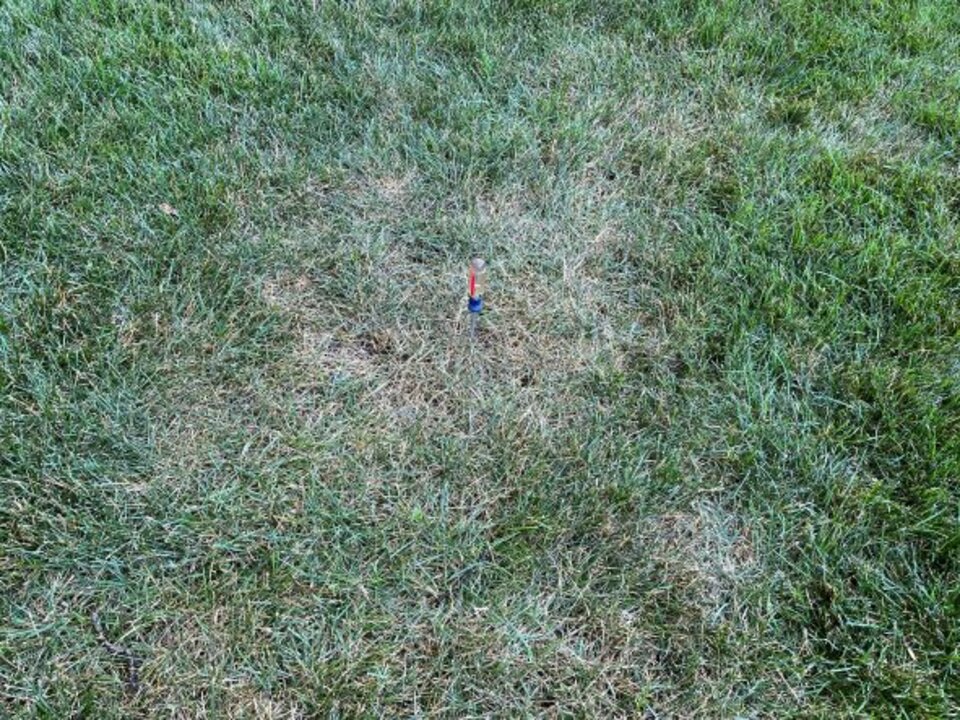Gaps and Overlaps in Lawn Irrigation

All lawn sprinkler systems, whether they are in-ground or above ground, have flaws. Some of the biggest are gaps and overlaps.
Actually, a well designed irrigation system, or the use of above ground spray heads utilizes overlaps in the form of “head-to-head coverage”. This involves water from one head spraying all the way to the adjacent head and vice versa. Since twice as much water is applied near the head as is at the end of the water stream, an even amount is applied if the system has good head-to-head coverage.
When head-to-head coverage/overlaps are lacking, then a gap is present. This is defined as a spot in the lawn where little to no water is being applied due to a deficiency in the system such as low water pressure or where a bent riser exists.
What does a gap look like? It looks like beige, brown or withered grass plants surrounded by green plants (see photo). A simple screwdriver test will confirm it, where the tool is pushed into the ground and pulled out; the blade will be dry and powdery rather than cool and moist. Eventually, these spots will thin and die, usually becoming invaded by various weed species.
Ok, so how do you avoid gaps? There are several approaches, and a lawn owner simply has to pick the best one for them.
- Hire a sprinkler service company fix the broken system components.
- Supplement the sprinkler system or above ground sprinklers with simple hand watering with a watering nozzle or wand.
- Change the above ground sprinkler device that you’ve been using.
Overall, the key to success with lawn watering is spotting inefficiencies such as gaps and broken sprinkler parts and making adjustments to keep the turf moist, not soggy or dry.
This article was reviewed by Nicole Stoner